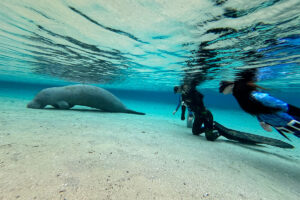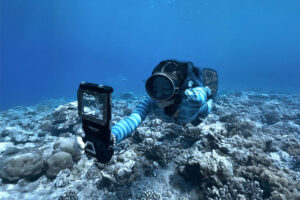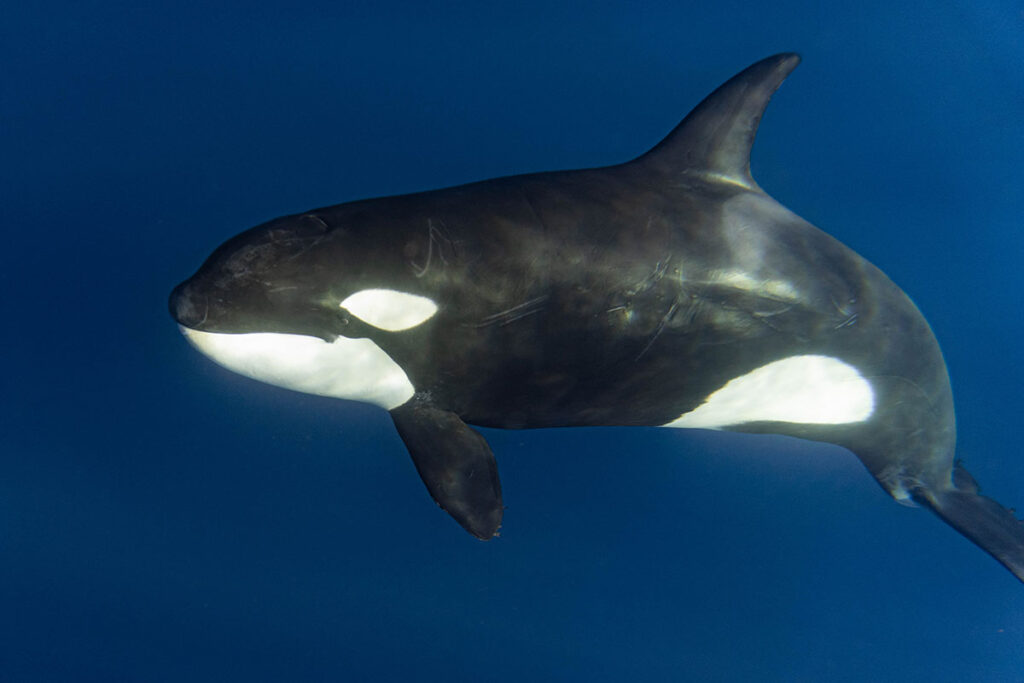
Let me take you back to the craziest ocean moment of my life — the first time I came eye-to-eye with wild orcas. I wasn’t planning to. I had just started freediving. I barely had any experience with marine life. And yet, there I was — in Baja California, in the water with seven killer whales. One of them was a calf.
Yes, I know it’s illegal to dive with whales in Mexico now, and I fully support that regulation. But back then, it was spontaneous. A lucky call from a few friends, a boat ride, and an afternoon that changed my life.
They were huge. So much bigger than I expected. Sleek, powerful, and honestly the most beautiful creatures I’ve ever seen in my life.
We spent the whole afternoon with them. They didn’t rush off. They didn’t seem stressed or bothered. Instead, they stayed in the same area with us for hours — breaching, diving, and sometimes turning to look at us. They let us come closer, but always kept a respectful distance.
And I didn’t feel unsafe for even one second.
If anything, I felt more at peace in that moment than I do sitting at my desk right now.
They were calm. Curious. Aware.
I’ll never forget the feeling of making eye contact with one of them underwater. It’s not like eye contact with a shark — where instinct and survival are at play.
With an orca, it feels like there’s emotion behind it. Thought. A presence that recognizes you.
I remember thinking: They feel things. They understand things. They have likes, dislikes, maybe even opinions — just like we do.
And I truly felt like they sensed that in us too.
To this day, I still get goosebumps every time I think about it.
That dive changed something in me. I even got an orca tattooed on my thigh — a reminder that this is why I dive. Not for adrenaline. Not for records. But for moments of wild connection that you can’t put into words.
Are orcas really killer whales?
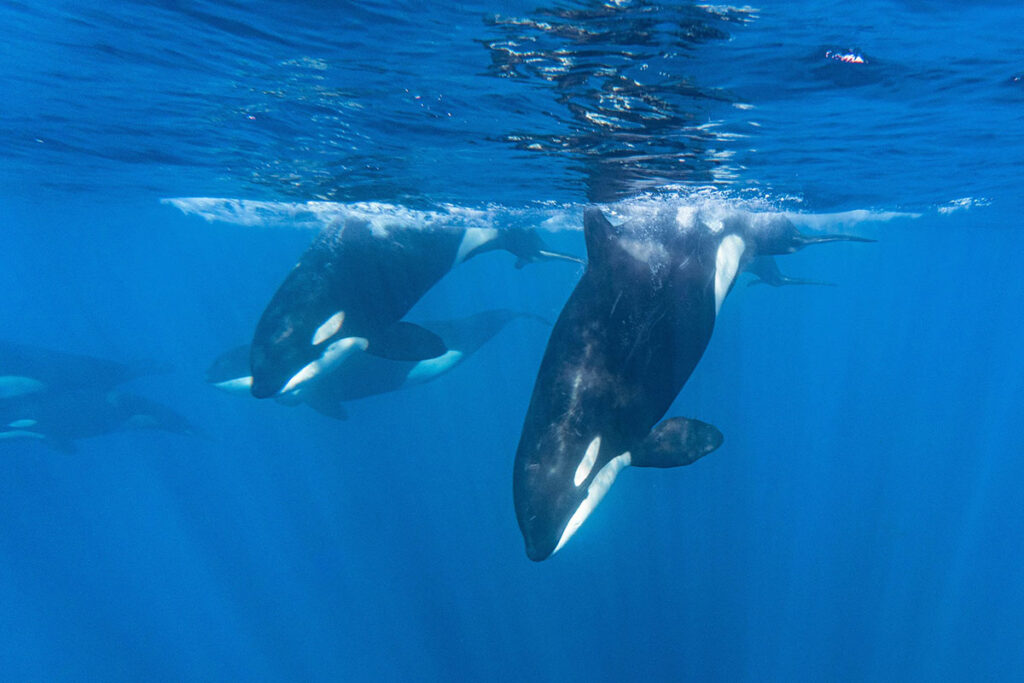
Let’s clear this up first: orcas aren’t whales at all — they’re the largest species of dolphin. And that name, “killer whale,” comes from early sailors who saw orcas hunting large whales and called them “whale killers.” The name flipped, but the reputation stuck.
Orcas are apex predators — powerful, strategic, and smart. But “killer” doesn’t mean dangerous to humans. In the wild, there has never been a documented case of a wild orca killing a human. Ever.
Are Orcas Safe to Dive With?
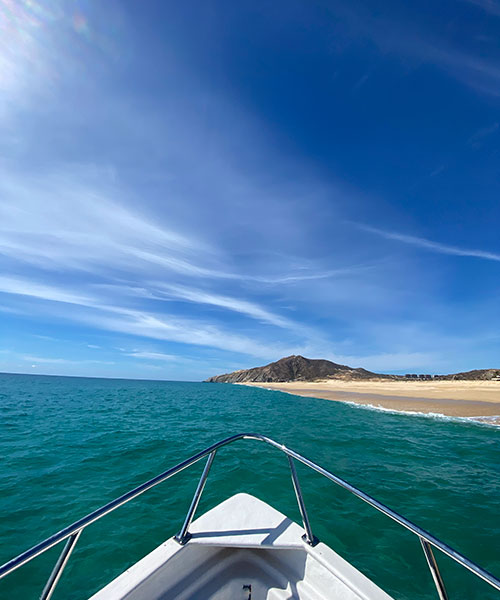
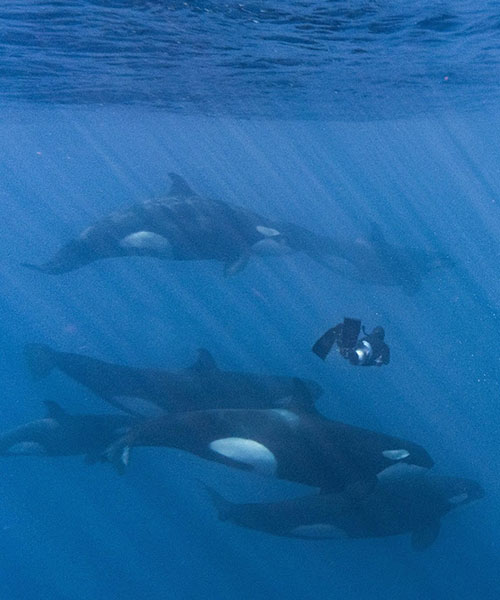
From my experience: 100% yes — diving with orcas can be completely safe, as long as it’s done ethically, respectfully, and passively.
Wild orcas are not aggressive toward humans. There are no recorded cases of a wild orca harming or attacking a person in the ocean. They don’t seek out conflict — in fact, they usually avoid us. If they choose to approach, it’s out of curiosity, not hostility.
That said, these are not tame animals. They are enormous, fast, and powerful. They live in a world of sound, movement, and instinct that we can barely comprehend. When you’re in the water with orcas, you’re stepping into their realm — not the other way around.
You don’t go diving with orcas to control the experience. You don’t chase, corner, or get in their way.
You go to be invited.
If they decide to stay near you, it’s a gift. A rare moment of connection between two intelligent species — and one of the most humbling things you’ll ever feel in the ocean.
Where to (possibly) encounter orcas in the wild:
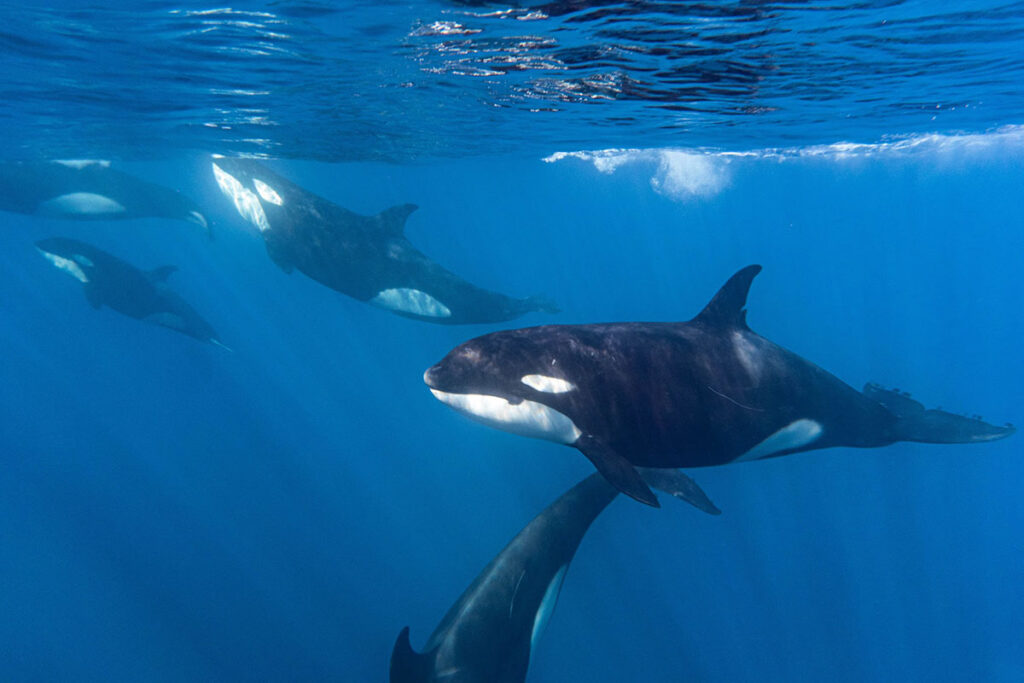
These are some of the few places on Earth where responsible, non-invasive orca encounters are still possible — either from the water or from a boat.
🇳🇴 Norway – Tromsø & Northern Fjords
Season: Late October to early January
Every winter, vast shoals of herring migrate into the fjords of Northern Norway, attracting hundreds of orcas (and humpbacks too). It’s the best place in the world for a potential in-water encounter with wild orcas.
You don’t scuba, but you can snorkel. You float at the surface and wait for the orcas to pass beneath or around you. The water is freezing (around 2–6°C / 35–43°F), so drysuits or thick wetsuits are mandatory.
HOW: Look for ethical, conservation-minded operators in Tromsø or Skjervøy, such as:
- Wild Seas
- Northern Explorers
- Arctic Freediving Norway
- Lofoten Diving
Ask if they prioritize orca behavior, have marine biologists onboard, and limit group sizes. These are signs of responsible wildlife tours.
🇳🇿 New Zealand – Bay of Plenty & Kaikōura
Season: Year-round, with better chances in summer (Dec–Feb)
New Zealand is home to a transient population of orcas, often seen close to shore while hunting rays and fish. Encounters are rare and unplanned, but magical if they happen. Orcas often come close to boats, especially when feeding. In-water encounters are not advertised or guaranteed, but on very rare occasions, snorkelers or paddleboarders might find themselves near them — always passively and without approaching.
HOW: Join boat-based wildlife tours from:
- Orca Research Trust (run by Dr. Ingrid Visser — the world’s top orca expert)
- Dolphin Seafaris in Tauranga
- Encounter Kaikōura
🇨🇦 Canada – British Columbia (Vancouver Island & Johnstone Strait)
Season: June to October
B.C. is home to several orca populations — resident pods, transients, and offshores. The area is one of the world’s most regulated marine sanctuaries, with strict protections for orcas. Diving or swimming with orcas is not permitted in Canada. However, boat-based whale watching is world-class — you can often witness breaching, spyhopping, hunting, or even social behavior like tail slapping.
HOW: Look for licensed “Whale Wise” certified operators, such as:
- Stubbs Island Whale Watching
- Eagle Eye Adventures
- Ocean Ecoventures
Some kayak expeditions like Spirit of the West offer multi-day tours through orca habitat (you stay on the water, not in it).
🇮🇸 Iceland – Grundarfjörður & Snæfellsnes Peninsula
Season: January to March
Like Norway, orcas here follow herring shoals during the cold season. The waters around the Snæfellsnes Peninsula are the best place to spot them, especially near the town of Grundarfjörður. Most encounters are from boats, but a few small groups may allow surface snorkeling, depending on conditions and behavior. Water temperatures are extreme, so drysuits are typically required.
HOW: Try these responsible operators:
- Láki Tours (Grundarfjörður)
- North Sailing (Húsavík)
- Whale Safari Reykjavik
⚠️ A Word on Ethics
In every location above, the same rule applies: you never chase, touch, or disturb orcas. Ethical operators should brief you thoroughly and prioritize the animals’ well-being over close-up photos.
If you’re ever offered a guaranteed in-water experience with orcas in a place where it’s not regulated, that’s a red flag. Be cautious, ask questions, and always choose the responsible route.
Wild Orcas Are Offering Food to Humans… Wait, What?
This might be one of the most fascinating new behaviors scientists have observed recently:
wild orcas are bringing food to humans.
Across different parts of the world — Norway, Russia, the Pacific Northwest — orcas have been recorded offering dead fish to divers, boaters, and researchers.
According to ScienceAlert, this behavior has now been seen multiple times. Sometimes they push the fish gently toward a person. Other times they hold it just out of reach, waiting to see what we’ll do.
Are they trying to feed us?
Play with us?
Manipulate us?
Experts don’t agree — but one thing is clear: they’re trying to communicate.
“This food-sharing behavior is normally seen between close pod members — so seeing it directed at humans is both strange and amazing.”
These animals aren’t just instinct-driven machines. They have cultures. Families. Traditions. Maybe even friendships.
Do Orcas Attack Humans or Boats?
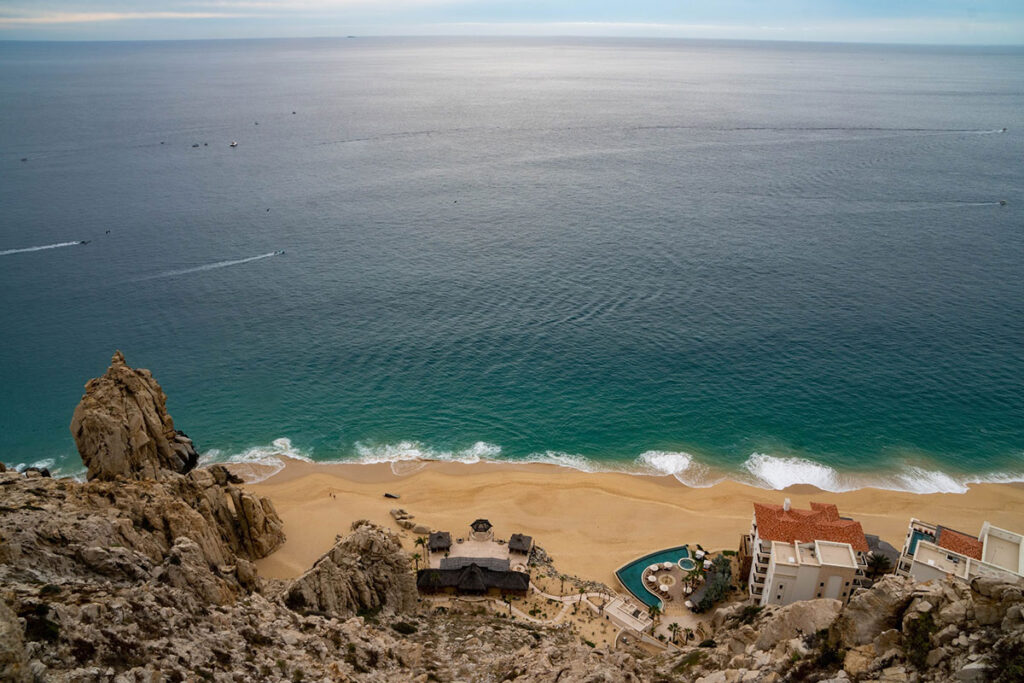
❌ Wild orca attacks on humans:
Zero.
Despite centuries of interactions, there are no confirmed cases of a wild orca killing a human. All known human deaths caused by orcas happened in captivity, under extreme stress conditions.
🚤 Orcas attacking boats?
In the last few years, especially around the Strait of Gibraltar, there have been a number of incidents of orcas ramming and damaging sailboats. It’s rare — and mostly seems focused on rudders. Some researchers believe it could be a form of play, or even a learned behavior passed between orcas.
Importantly: these aren’t “attacks” on humans. No injuries. Just curiosity? Frustration? Nobody knows yet.
Most experts believe it’s:
- Playful behavior
- A response to noise or stress
- Or possibly even a cultural trend among a specific group
It’s not an act of aggression toward people — just a weird twist in orca curiosity.
Why You Should Never See Orcas in Captivity
If I can ask one thing of you, it’s this:
Don’t support marine parks that keep orcas.
Captive orcas suffer immensely. Their natural range is thousands of kilometers. In tanks, they swim in circles. They’re often isolated or forced into unnatural groups. Many develop collapsed dorsal fins, stress-related illnesses, or self-harm behaviors.
Most captive orcas die far younger than they would in the wild.
I know seeing them up close is tempting. But the ocean is their home — not a tank.
So please — before you buy that ticket, think twice.
Let wild orcas stay wild.
Support conservation, not entertainment.
What Orcas Taught Me
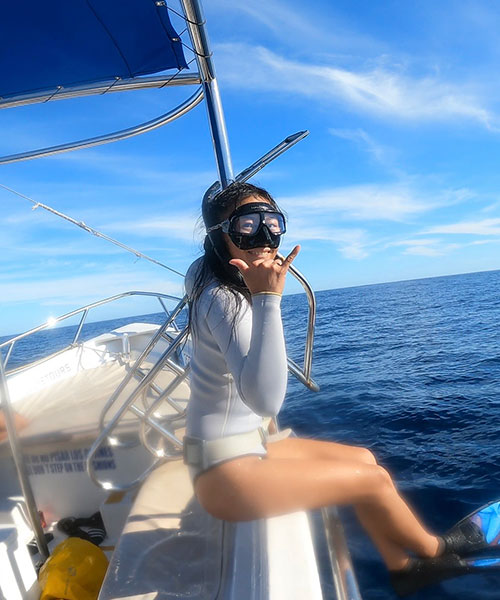
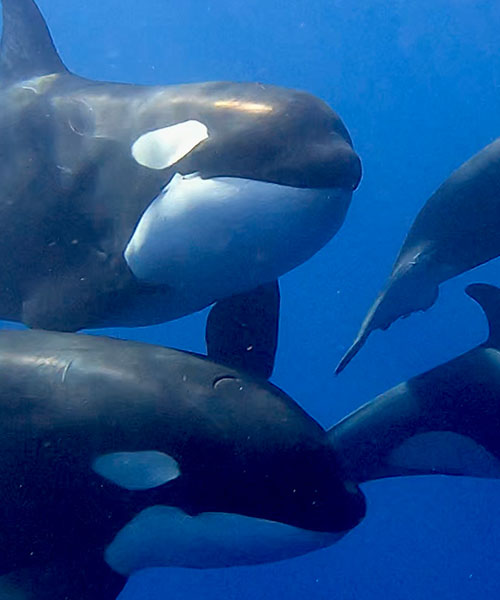
Some encounters change the way you see the ocean. Others change the way you see yourself.
Diving with orcas was never on my bucket list — it was beyond it. I didn’t plan it, chase it, or expect it. But it happened. And it reminded me why I keep going back to the water:
To feel connected. To feel small. To feel alive.
Orcas aren’t “killers.” They’re guardians of the deep — intelligent, emotional, and powerful beyond words. And if you ever get the chance to share the ocean with them, even for a moment, you’ll understand exactly what I mean.
Until then — stay curious, dive safe, and protect what matters.
Follow me on Instagram @itstianyang for real freedive stories and ocean magic. 🌊🐋
